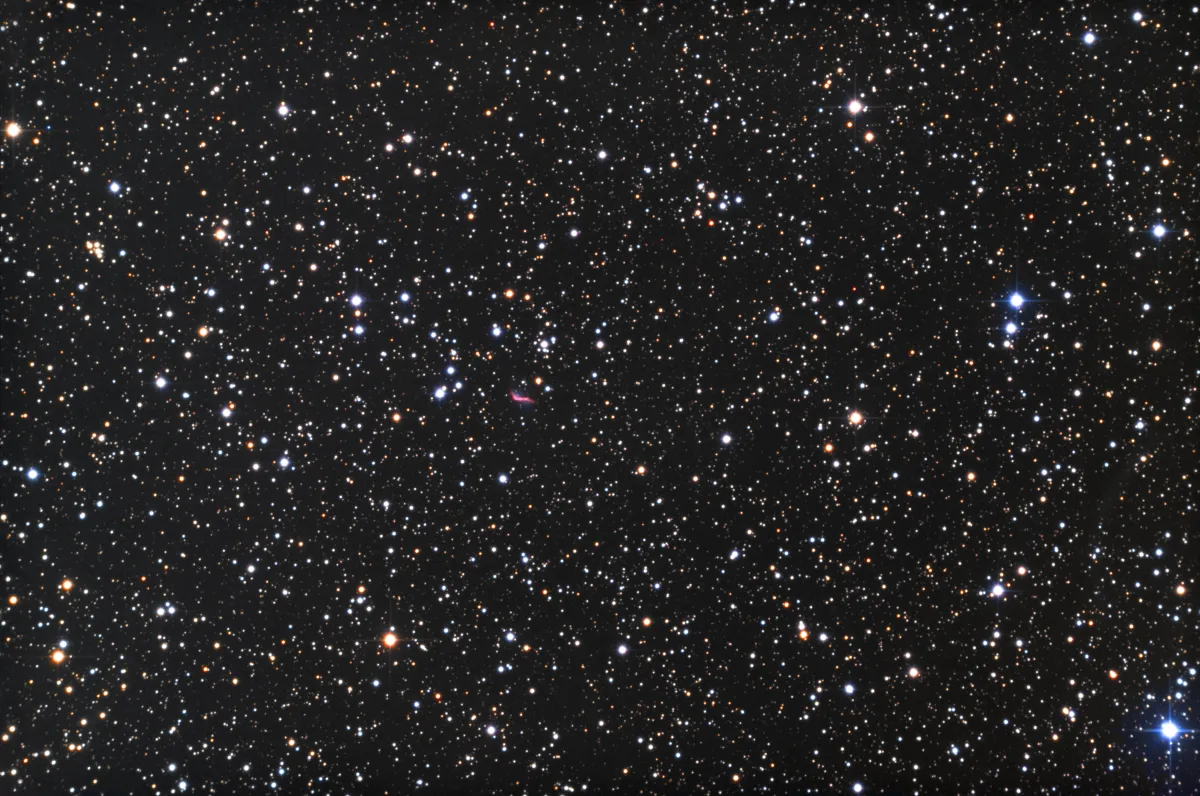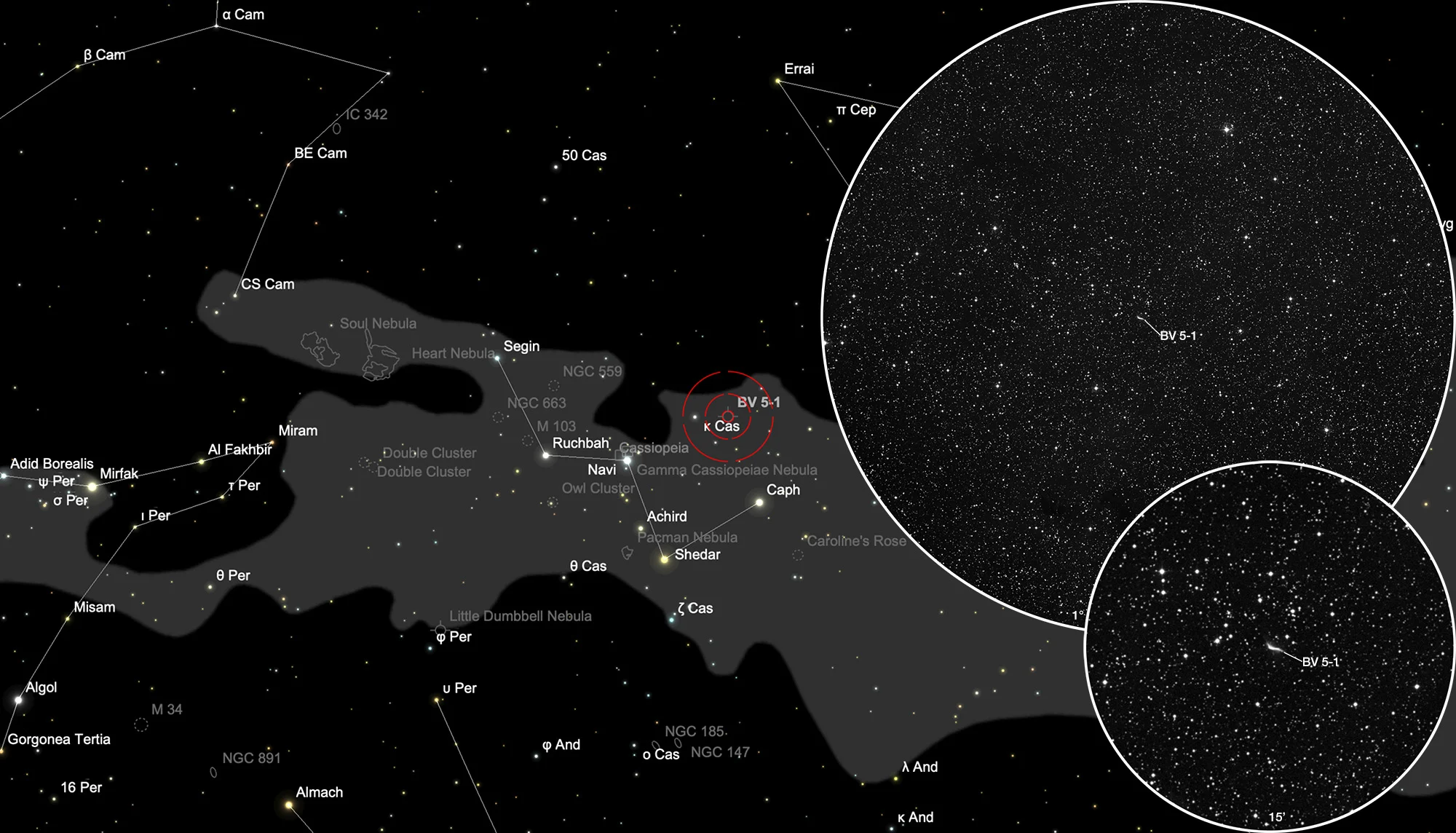Planetary Nebula BV 5-1

History
In 1956 the German-American astronomer Erika Böhm-Vitense discovered three new planetary nebulae during a study of extragalactic nebulae at Lick Observatory. This nebula here was the first listed in table V of her publication, hence the designations Böhm Vitense 5-1, BV 5-1, or also sometimes just BV 1. The other ones on this list were BV 5-2 and BV 5-3. [548]
Physical Properties
BV 5-1 is an odd looking object, not at all looking like an ordinary planetary nebula. It shows a knotty structure along a central bar, the major axis, which appears to be optical thick. This molecular ring is seen edge-on. The nebula is highly enriched in nitrogen and helium, powered by an exceeingly hot star with a temperature between 170'000 K and 236'000 K. Distance is estimated to 2100 pc. It is a relatively evolved nebula with a kinematic age of approximately 24'000 years. [549, 550] According to SkySafari 6 the visual magnitude is 15.69 mag. [149]
| Designations | PN G119.3+00.3: BV 5-1, PK 119+00.1, ARO 199 |
| Right Ascension (J2000.0) | 00h 19m 59s |
| Declination (J2000.0) | +62° 59' 01" |
| Dimensions | 18." : (optical) |
| Radial Velocity | -72.2 ± 4.2 km/s |
| Expansion Velocity | 11.0 (N-II) km/s |
| C-Star Magnitude | V: 22.3 |
| Discoverer | BOHM-VITENSE 1956 |
Finder Chart
The planetary nebula Böhm-Vitense 5-1 can be found in the constellation Cassiopeia. On 29 September it is in opposition to the Sun and crosses the meridian at local midnight. The object is circumpolar, but from June to February it is highest in the sky and best for observing.
